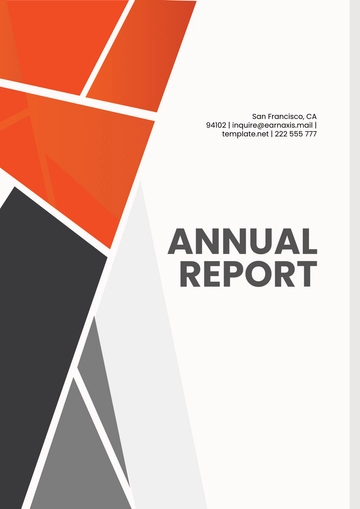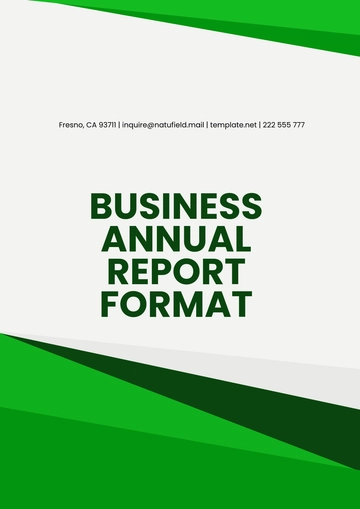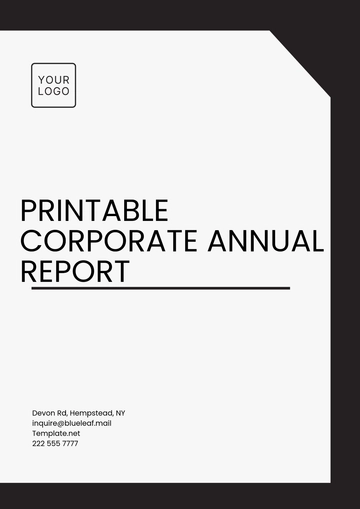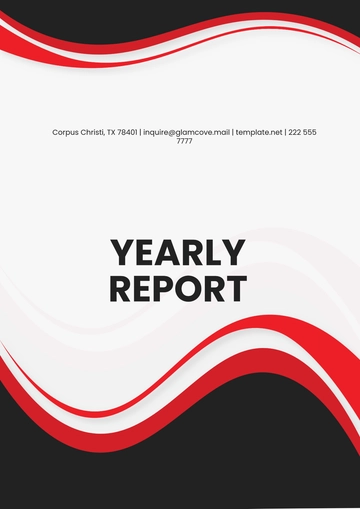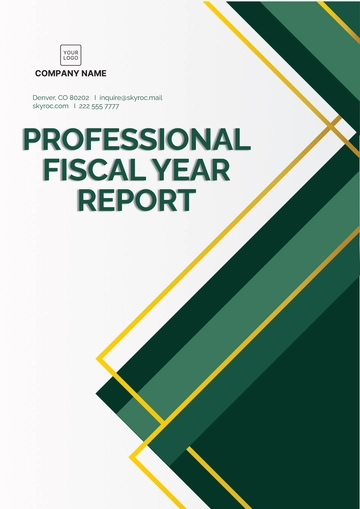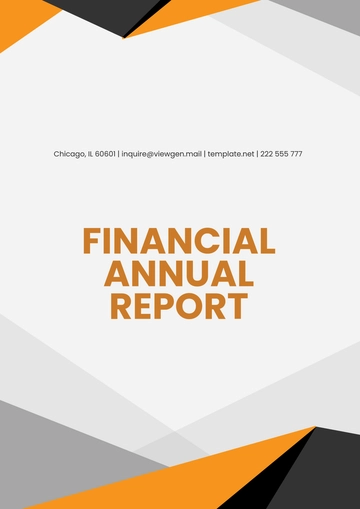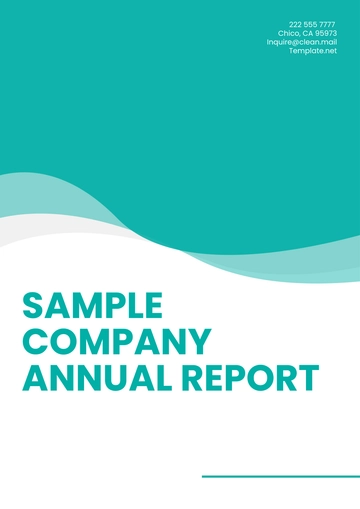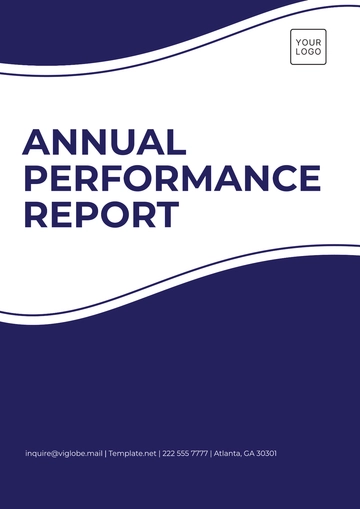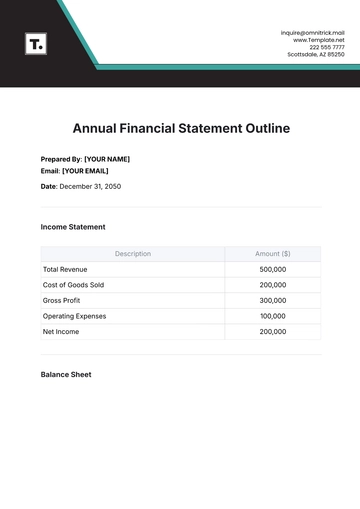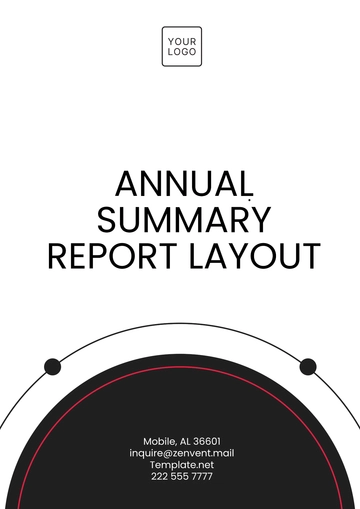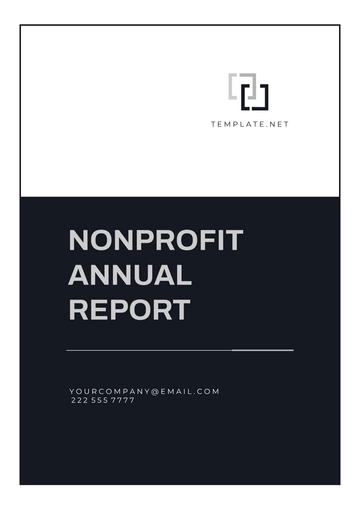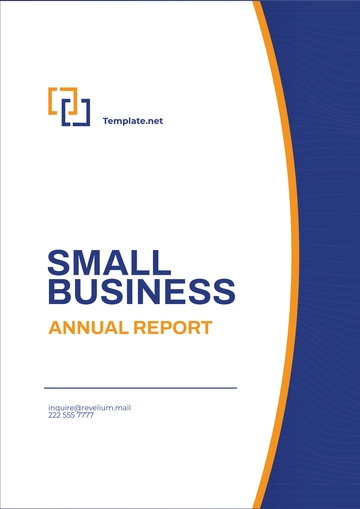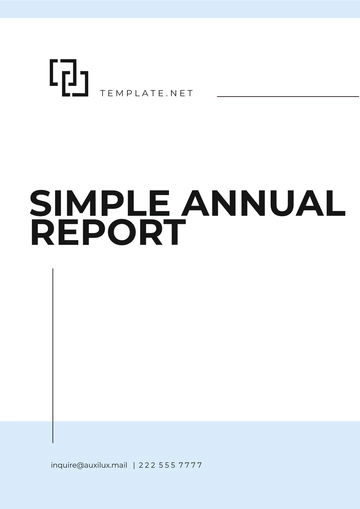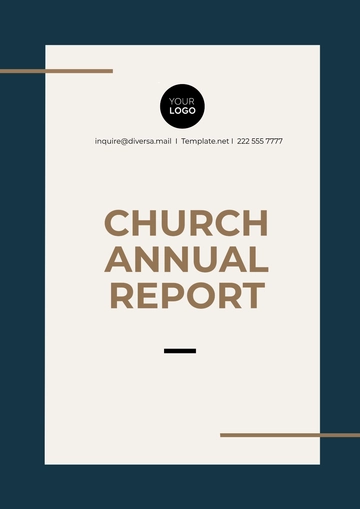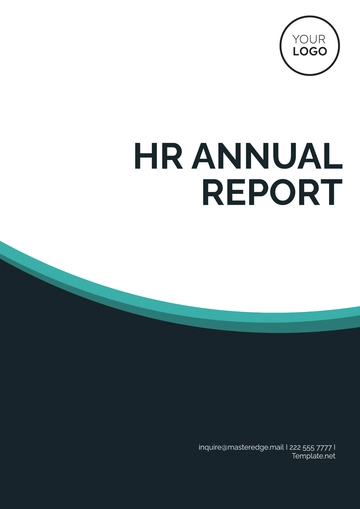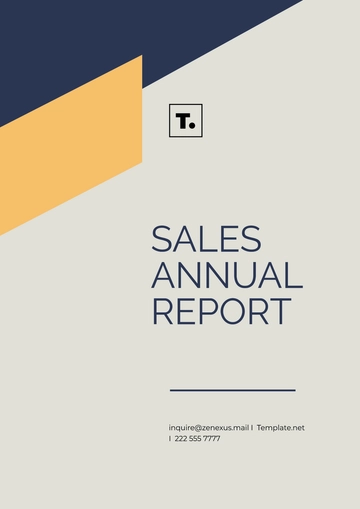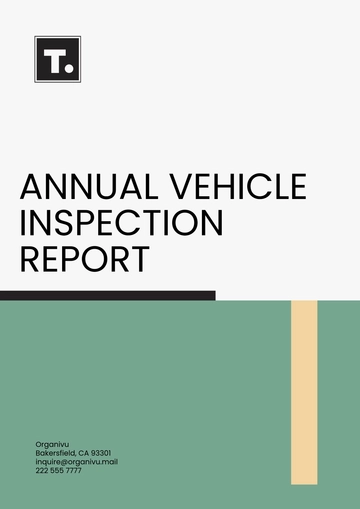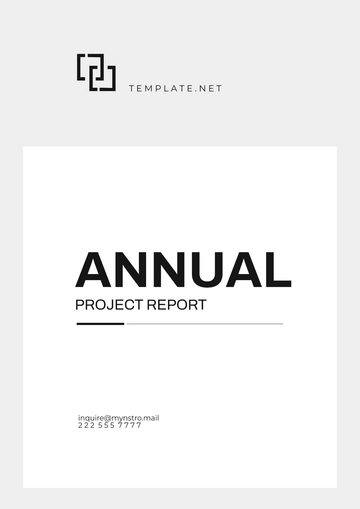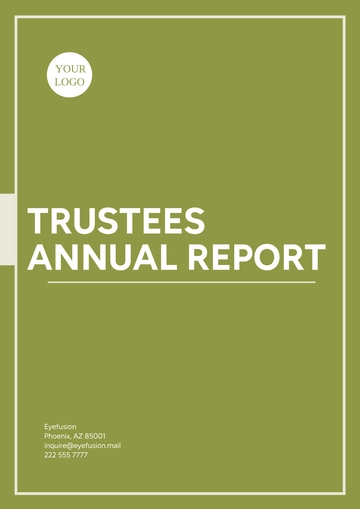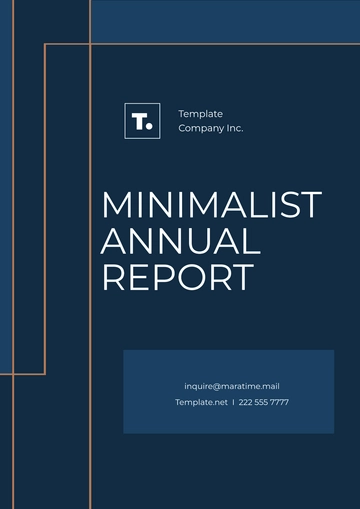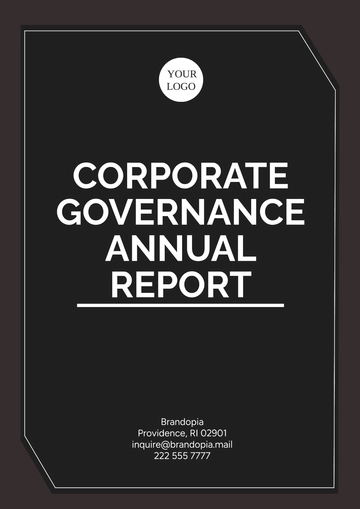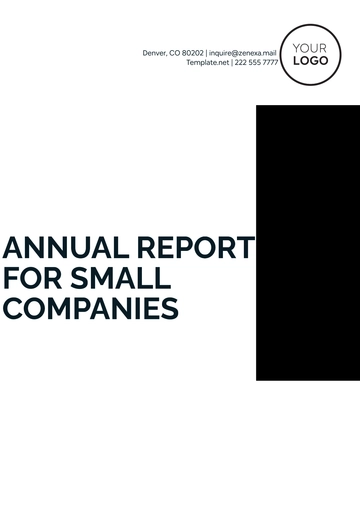Free Agriculture Profit and Loss Report

I. Executive Summary
This Agriculture Profit and Loss Report provides a comprehensive overview of the financial performance of [Your Company Name] for the fiscal year ending 2055. This report highlights key financial metrics, including total revenue, total expenses, net profit, and profit margins. The purpose of this report is to track financial performance and identify areas for improvement.
During the fiscal year, [Your Company Name] generated a total revenue of $5,000,000, primarily driven by the sales of organic produce, including strawberries, tomatoes, and leafy greens. The total expenses for the year amounted to $3,800,000, resulting in a net profit of $1,200,000. This demonstrates a healthy profit margin of 24%, indicating effective cost management and revenue generation strategies.
Key financial insights include a significant increase in revenue from direct-to-consumer sales and online platforms. Additionally, the implementation of advanced farming techniques and sustainable practices has contributed to cost savings and improved profitability. This report will delve into detailed financial analyses, operational expenses, and recommendations for future growth.
II. Revenue Analysis
A. Total Revenue Breakdown
The following table presents the total revenue breakdown for the fiscal year:
Revenue Source | Amount |
|---|---|
Organic Strawberries | $2,000,000 |
Organic Tomatoes | $1,200,000 |
Leafy Greens | $800,000 |
Direct-to-Consumer Sales | $500,000 |
Online Sales | $500,000 |
Total | $5,000,000 |
Organic Strawberries: The revenue generated from organic strawberries amounted to $2,000,000, making it the highest revenue source for [Your Company Name]. This reflects the growing demand for organic produce and the successful market penetration of this product.
Organic Tomatoes: Revenue from organic tomatoes was $1,200,000. This significant contribution highlights the popularity and market acceptance of organic tomatoes among consumers.
Leafy Greens: The sales of leafy greens generated $800,000 in revenue. This indicates a strong market presence and consumer preference for organic leafy greens.
Direct-to-Consumer Sales: Direct-to-consumer sales, including farmers markets and local deliveries, contributed $500,000 to the total revenue. This revenue stream has shown promising growth and potential for further expansion.
Online Sales: Online sales accounted for $500,000, demonstrating the effectiveness of e-commerce platforms in reaching a broader customer base and driving revenue growth.
The revenue analysis highlights the importance of diversifying revenue streams and capitalizing on consumer trends towards organic and sustainable products. The strong performance across multiple product lines and sales channels indicates a robust and resilient business model.
B. Quarterly Revenue Comparison
The following chart and table present the quarterly revenue comparison:
Quarter | Revenue |
|---|---|
Q1 | $1,000,000 |
Q2 | $1,200,000 |
Q3 | $1,400,000 |
Q4 | $1,400,000 |
Total | $5,000,000 |
Q1: The first quarter generated $1,000,000 in revenue. This initial revenue reflects the seasonal nature of agricultural production and early market activities.
Q2: Revenue in the second quarter increased to $1,200,000. The growth in this quarter can be attributed to higher sales volumes and increased market penetration.
Q3: The third quarter saw the highest revenue of $1,400,000. This peak is likely due to the harvest season and the availability of a wider variety of fresh produce.
Q4: Revenue remained strong at $1,400,000 in the fourth quarter, indicating sustained demand and successful marketing efforts during the holiday season.
The quarterly revenue comparison provides insights into the seasonal trends and sales cycles of [Your Company Name]. Understanding these patterns helps in planning production, marketing, and sales strategies to maximize revenue throughout the year.
III. Expense Analysis
A. Operating Expenses
The following table presents the operating expenses for the fiscal year:
Expense Category | Amount |
|---|---|
Labor Costs | $1,000,000 |
Seed and Supplies | $500,000 |
Fertilizers and Pesticides | $300,000 |
Water and Irrigation | $200,000 |
Equipment Maintenance | $400,000 |
Marketing and Sales | $300,000 |
Transportation | $200,000 |
Miscellaneous Expenses | $100,000 |
Total | $3,000,000 |
Labor Costs: Labor costs were the highest operating expense at $1,000,000. This includes wages for farm workers, administrative staff, and seasonal labor. Effective labor management and productivity enhancements can help control these costs.
Seed and Supplies: The expense for seeds and supplies amounted to $500,000. This category covers the cost of purchasing high-quality seeds and necessary farming supplies, crucial for maintaining crop quality and yield.
Fertilizers and Pesticides: Fertilizers and pesticides expenses totaled $300,000. Using organic and sustainable products can help in reducing these costs and ensuring compliance with organic farming standards.
Water and Irrigation: Water and irrigation costs were $200,000. Implementing efficient irrigation systems and water management practices can help in optimizing water use and reducing costs.
Equipment Maintenance: Equipment maintenance expenses were $400,000. Regular maintenance and investment in modern equipment can prevent breakdowns and improve operational efficiency.
Marketing and Sales: Marketing and sales expenses amounted to $300,000. This includes costs associated with advertising, promotions, and sales activities to drive revenue growth.
Transportation: Transportation costs were $200,000. Efficient logistics and transportation strategies are essential for timely delivery and cost control.
Miscellaneous Expenses: Miscellaneous expenses totaled $100,000. This category covers various incidental expenses that are not categorized elsewhere.
The expense analysis highlights key areas where cost control measures can be implemented to improve overall profitability. By focusing on efficient resource management and operational improvements, [Your Company Name] can enhance its financial performance.
B. Cost of Goods Sold (COGS)
The following table presents the cost of goods sold (COGS) for the fiscal year:
COGS Component | Amount |
|---|---|
Direct Materials | $1,000,000 |
Direct Labor | $500,000 |
Manufacturing Overhead | $300,000 |
Total | $1,800,000 |
Direct Materials: The cost of direct materials was $1,000,000. This includes the cost of seeds, fertilizers, and other inputs directly used in the production of crops. Effective procurement strategies and bulk purchasing can help reduce these costs.
Direct Labor: Direct labor costs were $500,000. This covers the wages of workers directly involved in the production process. Improving labor efficiency and productivity can help manage these costs.
Manufacturing Overhead: Manufacturing overhead expenses amounted to $300,000. This includes indirect costs such as utilities, equipment depreciation, and facility maintenance. Implementing cost-saving measures and efficient resource use can reduce overhead expenses.
The COGS analysis provides insights into the direct costs associated with production. By optimizing these costs, [Your Company Name] can improve its gross profit margins and overall profitability.
IV. Profitability Analysis
A. Gross Profit Margin
The following table presents the gross profit margin calculation:
Metric | Amount |
|---|---|
Total Revenue | $5,000,000 |
Cost of Goods Sold (COGS) | $1,800,000 |
Gross Profit | $3,200,000 |
Gross Profit Margin | 64% |
Gross Profit: The gross profit for the fiscal year was $3,200,000. This is the difference between total revenue and the cost of goods sold, representing the profit generated from core business operations.
Gross Profit Margin: The gross profit margin was 64%. This metric indicates the percentage of revenue remaining after accounting for the cost of goods sold. A high gross profit margin reflects effective cost management and strong pricing strategies.
The gross profit margin analysis demonstrates the efficiency of [Your Company Name] in managing production costs and generating profit from sales. Maintaining a high gross profit margin is crucial for covering operating expenses and achieving net profitability.
B. Net Profit Margin
The following table presents the net profit margin calculation:
Metric | Amount |
|---|---|
Total Revenue | $5,000,000 |
Total Expenses | $3,800,000 |
Net Profit | $1,200,000 |
Net Profit Margin | 24% |
Net Profit: The net profit for the fiscal year was $1,200,000. This is the profit remaining after all expenses, including operating expenses, interest, and taxes, have been deducted from total revenue.
Net Profit Margin: The net profit margin was 24%. This metric indicates the percentage of revenue remaining as profit after all expenses. A healthy net profit margin reflects strong financial performance and effective cost control.
The net profit margin analysis highlights the overall profitability of [Your Company Name]. Maintaining a strong net profit margin is essential for sustaining business operations and achieving long-term financial stability.
V. Cash Flow Analysis
A. Operating Cash Flow
The following table presents the operating cash flow for the fiscal year:
Cash Flow Component | Amount |
|---|---|
Cash Receipts | $5,200,000 |
Cash Payments | $3,700,000 |
Net Operating Cash Flow | $1,500,000 |
Cash Receipts: Cash receipts amounted to $5,200,000. This includes cash inflows from sales, accounts receivable collections, and other operating activities. Effective cash management and timely collections contribute to positive cash flow.
Cash Payments: Cash payments were $3,700,000. This includes cash outflows for expenses, accounts payable, and other operating activities. Controlling cash payments and optimizing payment schedules help maintain healthy cash flow.
The operating cash flow analysis provides insights into the cash generated from core business operations. Positive operating cash flow is crucial for funding day-to-day activities and ensuring business continuity.
B. Investing Cash Flow
The following table presents the investing cash flow for the fiscal year:
Cash Flow Component | Amount |
|---|---|
Capital Expenditures | $500,000 |
Equipment Purchases | $300,000 |
Net Investing Cash Flow | ($800,000) |
Capital Expenditures: Capital expenditures amounted to $500,000. This includes investments in infrastructure, facilities, and long-term assets. Strategic capital investments support business growth and operational efficiency.
Equipment Purchases: Equipment purchases were $300,000. This includes the acquisition of new farming equipment and technology to enhance productivity and reduce labor costs.
The investing cash flow analysis highlights the cash used for capital investments and equipment purchases. While investing activities result in cash outflows, they are essential for supporting long-term business growth and competitiveness.
VI. Balance Sheet Analysis
A. Assets
The following table presents the assets for the fiscal year:
Asset Category | Amount |
|---|---|
Current Assets | $1,000,000 |
Property, Plant, and Equipment | $2,000,000 |
Intangible Assets | $500,000 |
Total Assets | $3,500,000 |
Current Assets: Current assets amounted to $1,000,000. This includes cash, accounts receivable, and inventory. Effective management of current assets is crucial for meeting short-term obligations and maintaining liquidity.
Property, Plant, and Equipment: The value of property, plant, and equipment was $2,000,000. This category includes land, buildings, and farming equipment. Regular maintenance and strategic investments in assets support long-term business operations.
Intangible Assets: Intangible assets were valued at $500,000. This includes intellectual property, brand value, and goodwill. Protecting and enhancing intangible assets contributes to the company's market position and competitive advantage.
The balance sheet analysis provides a snapshot of the company's financial position. A strong asset base supports business operations and financial stability.
B. Liabilities and Equity
The following table presents the liabilities and equity for the fiscal year:
Liabilities and Equity | Amount |
|---|---|
Current Liabilities | $800,000 |
Long-term Liabilities | $1,000,000 |
Equity | $1,700,000 |
Total Liabilities and Equity | $3,500,000 |
Current Liabilities: Current liabilities amounted to $800,000. This includes accounts payable, short-term loans, and other obligations due within one year. Managing current liabilities is essential for maintaining liquidity and financial health.
Long-term Liabilities: Long-term liabilities were $1,000,000. This includes long-term loans and other obligations due beyond one year. Strategic management of long-term liabilities ensures financial stability and supports business growth.
Equity: The equity value was $1,700,000. This represents the owners' investment in the company and retained earnings. Building and maintaining equity is crucial for business resilience and investor confidence.
The liabilities and equity analysis provides insights into the company's financial obligations and ownership structure. Effective management of liabilities and equity supports financial stability and long-term success.
VII. Comparative Analysis
A. Year-over-Year Comparison
The following chart and table present the year-over-year financial comparison:
Metric | 2054 | 2055 | Change |
|---|---|---|---|
Total Revenue | $4,500,000 | $5,000,000 | 11.1% |
Total Expenses | $3,500,000 | $3,800,000 | 8.6% |
Net Profit | $1,000,000 | $1,200,000 | 20% |
Total Revenue: Total revenue increased by 11.1% from $4,500,000 in 2054 to $5,000,000 in 2055. This growth reflects successful sales strategies and market expansion efforts.
Total Expenses: Total expenses increased by 8.6% from $3,500,000 in 2054 to $3,800,000 in 2055. The controlled increase in expenses relative to revenue growth indicates effective cost management.
Net Profit: Net profit increased by 20% from $1,000,000 in 2054 to $1,200,000 in 2055. This significant improvement in profitability demonstrates the company's ability to generate higher returns while managing costs effectively.
The year-over-year comparison highlights the financial growth and performance improvements achieved by [Your Company Name]. Continued focus on revenue generation and cost control will support sustained financial success.
B. Industry Benchmarking
The following table presents the industry benchmarking comparison:
Metric | [Your Company Name] | Industry Average |
|---|---|---|
Gross Profit Margin | 64% | 60% |
Net Profit Margin | 24% | 20% |
Operating Expenses | $3,000,000 | $3,200,000 |
Gross Profit Margin: [Your Company Name]'s gross profit margin of 64% is higher than the industry average of 60%. This indicates strong cost management and pricing strategies, resulting in higher profitability.
Net Profit Margin: [Your Company Name]'s net profit margin of 24% exceeds the industry average of 20%. This demonstrates the company's ability to generate higher returns and maintain financial stability.
Operating Expenses: The operating expenses of $3,000,000 are lower than the industry average of $3,200,000. Effective cost control measures contribute to this favorable comparison.
The industry benchmarking analysis provides valuable insights into [Your Company Name]'s competitive position. Maintaining superior financial performance relative to industry peers supports long-term success and market leadership.
VIII. Recommendations
A. Strategic Initiatives
Revenue Growth: Focus on expanding market reach and increasing sales through new distribution channels and product diversification. This includes exploring direct-to-consumer and online sales opportunities.
Cost Management: Implement cost control measures to manage operating expenses and improve profitability. This includes optimizing resource use and enhancing operational efficiency.
Sustainable Practices: Continue to adopt sustainable farming practices to enhance environmental performance and meet consumer demand for eco-friendly products. This includes water conservation and waste management.
Technology Investment: Invest in advanced farming technology to improve productivity and reduce costs. This includes precision agriculture, automation, and IoT devices.
Brand Development: Develop a strong brand identity and effective marketing strategies to build brand loyalty and consumer trust. This includes engaging with consumers and promoting positive stories.
B. Financial Strategies
Funding Options: Explore various funding options to secure sufficient capital for growth initiatives and ongoing operations. This includes loans, grants, and investor partnerships.
Revenue Diversification: Diversify revenue streams by exploring additional market opportunities and product offerings. This reduces risk and increases financial resilience.
Financial Monitoring: Develop financial monitoring systems to track performance and identify potential issues. This includes regular financial reviews and performance evaluations.
Investment Review: Regularly review and adjust the investment strategy to ensure alignment with business goals and changing market conditions. This ensures continuous improvement and financial success.
IX. Conclusion
This Agriculture Profit and Loss Report of [Your Company Name] provides a detailed analysis of the company's financial performance for the fiscal year 2055. The report highlights key financial metrics, including revenue, expenses, profitability, and cash flow, providing valuable insights into the company's financial health and operational efficiency.
By implementing the recommended strategies and initiatives, [Your Company Name] can capitalize on growth opportunities, improve profitability, and achieve long-term financial stability. Continuous monitoring and adaptation of these strategies will ensure the company remains competitive and successful in the dynamic agricultural industry.
- 100% Customizable, free editor
- Access 1 Million+ Templates, photo’s & graphics
- Download or share as a template
- Click and replace photos, graphics, text, backgrounds
- Resize, crop, AI write & more
- Access advanced editor
Track your financial performance with our Agriculture Profit and Loss Report Template only on Template.net! This template features editable fields to customize the report to your profit and loss data. Customizable sections and the AI Editor Tool ensures efficient and precise report creation, perfect for your agricultural financial tracking needs!
You may also like
- Sales Report
- Daily Report
- Project Report
- Business Report
- Weekly Report
- Incident Report
- Annual Report
- Report Layout
- Report Design
- Progress Report
- Marketing Report
- Company Report
- Monthly Report
- Audit Report
- Status Report
- School Report
- Reports Hr
- Management Report
- Project Status Report
- Handover Report
- Health And Safety Report
- Restaurant Report
- Construction Report
- Research Report
- Evaluation Report
- Investigation Report
- Employee Report
- Advertising Report
- Weekly Status Report
- Project Management Report
- Finance Report
- Service Report
- Technical Report
- Meeting Report
- Quarterly Report
- Inspection Report
- Medical Report
- Test Report
- Summary Report
- Inventory Report
- Valuation Report
- Operations Report
- Payroll Report
- Training Report
- Job Report
- Case Report
- Performance Report
- Board Report
- Internal Audit Report
- Student Report
- Monthly Management Report
- Small Business Report
- Accident Report
- Call Center Report
- Activity Report
- IT and Software Report
- Internship Report
- Visit Report
- Product Report
- Book Report
- Property Report
- Recruitment Report
- University Report
- Event Report
- SEO Report
- Conference Report
- Narrative Report
- Nursing Home Report
- Preschool Report
- Call Report
- Customer Report
- Employee Incident Report
- Accomplishment Report
- Social Media Report
- Work From Home Report
- Security Report
- Damage Report
- Quality Report
- Internal Report
- Nurse Report
- Real Estate Report
- Hotel Report
- Equipment Report
- Credit Report
- Field Report
- Non Profit Report
- Maintenance Report
- News Report
- Survey Report
- Executive Report
- Law Firm Report
- Advertising Agency Report
- Interior Design Report
- Travel Agency Report
- Stock Report
- Salon Report
- Bug Report
- Workplace Report
- Action Report
- Investor Report
- Cleaning Services Report
- Consulting Report
- Freelancer Report
- Site Visit Report
- Trip Report
- Classroom Observation Report
- Vehicle Report
- Final Report
- Software Report
